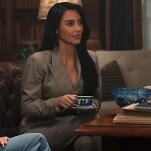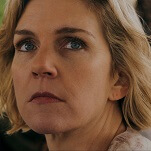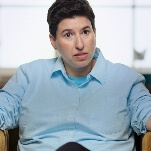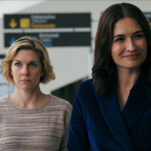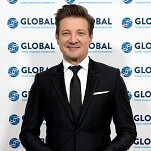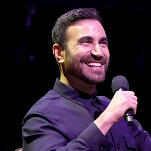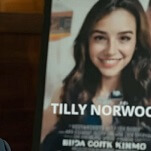Is Disney’s Beauty And The Beast still a potent movie for an adult who’s never seen it?

Animation was never my thing. It’s not like I didn’t get plenty of it: Growing up, I spent as much time as the average latchkey suburban kid watching after-school cartoons, tuning in to the annual holiday specials from the likes of Peanuts, Garfield, and Rankin-Bass, and making sure to absorb every episode of The Simpsons multiple times on my increasingly worn-out set of VHS cassettes. And I would see plenty of animated films in the theater, whether my parents were trying to get a few hours’ peace or some friend’s birthday party entailed a trip to the multiplex.
But I didn’t ever feel the need to seek out animated movies. Many films considered classics of the form passed right by me at the age I would’ve been the target demographic, perhaps because I was too busy saving up my dimes to buy the next issue of Avengers West Coast or Uncanny X-Men. It wasn’t until college that I started trying to remedy this gap in my pop-culture education, which is why I was nearly of legal drinking age before I ever saw Toy Story, The Nightmare Before Christmas, Princess Mononoke, and more. And it’s why every single film from the era now known as the Disney Renaissance, from 1989-’99, passed me by during my youth, with the exception of Aladdin. (My parents, like most Americans during that time, were big Robin Williams boosters.) I haven’t seen a single one, including The Little Mermaid and The Lion King, and every time I thought about rectifying the situation, other older films (read: not animated) ended up taking priority. For a while, my media blackout on the subject became a point of pride, in the same way that stupid people happily dismiss all superhero films, or some meat-eaters intentionally ignore terrible practices that enable their cheap burgers. It needed to stop.
The howls of disbelief that greeted my confession of ignorance at this realm of the cinematic landscape seem largely based in an affinity formed in childhood, the kind of bond people often form with the entertainments of their youth that carry through into adulthood based purely on nostalgia. (Not that I would know, because I definitely didn’t get into an argument with someone this weekend about the extent to which Chris Claremont’s X-Men books still hold up.) Put more plainly, people love their Disney movies, and that love is most often tied to the impressionable youthful period in which they first encountered it. But great children’s entertainment can be appreciated at any age, with the Pixar films arguably serving as exhibit A from the past 20 years for this particular claim. If this grown-ass thirtysomething can get choked up at an animated rabbit doing her job well (yes, I liked Zootopia), surely the much-vaunted greatness of Disney’s ’90s output should be no problem.
So when it came time to dip my toes into this widely beloved niche of entertainment, Beauty And The Beast was the obvious place to start. No less august a publication than this very site ran a piece late last year arguing the 1991 musical remains the high-water mark of the company. The first animated film to be nominated for Best Picture, Beauty And The Beast racked up critical and commercial success, including becoming the first animated feature adapted into a Broadway musical. (You’re welcome, The Lion King.) It’s the kind of legacy that adds the weight of expectation to a viewer coming to it for the first time, so when I sat down to view it this past weekend, I had little doubt I would come away impressed. And I did—sort of. The very factors that made the film a template for great fairy-tale entertainment have also rendered it more difficult to appreciate in light of everything that’s come after. Here’s A.V. Club contributor Josh Spiegel, making the point for me in the article I cited above:
The Disney Renaissance, despite encompassing so many different films, is best identified by a series of elements that now approach the level of cliché: a fairy-tale-inspired story, an epic romance, catchy songs, goofy comic-relief sidekicks, and a fearsome-yet-charming villain.
And those elements aren’t just the formula for films from the Disney Renaissance. They’re the building blocks for a huge swath of animated cinema, much of it from the Mouse House. Movies like Frozen are obvious continuations of this strategy, but it’s the tactic of Disney’s original golden age, too—Snow White, Cinderella, and more all pay fealty to this blend of romance and whimsy. And while Beauty And The Beast’s acclaim stems from the fact that it does all of this very well, that’s also all it does. It’s a superlative example of the form, yet it can’t help but come across as predictable, for good and ill.
Beauty And The Beast is never less than entertaining and visually appealing, as long as you’re not looking for originality in the story. The narrative is generic to the point of obvious, both because it’s drawn from an old fable and because it has served as the foundation for a thousand like-minded imitators. The elevator pitch—smart and plucky heroine slowly realizes the guy who initially seems like a monster is actually a big softie at heart, and wins her love—is the ultimate distillation of juvenile fantasy, stretched and adapted in everything from YA cheese like Twilight to adult rom-coms. In this iteration of the fairy tale, Belle, an attractive young woman whose entire small-town population finds her “odd” due to her penchant for reading books (what a weirdo!), agrees to become prisoner of the Beast in place of her inventor father, who stumbled into the creature’s castle one night seeking respite.
What she doesn’t know is that the Beast is actually under a curse placed upon him by a sorceress. When the arrogant and heartless young prince refused the mystic refuge at his home one night years prior, she placed a spell on him: The entire castle is under a curse, with the prince transformed into a monstrous beast, and his entire staff of servants turned into household objects like clocks, candlesticks, and more. If he can’t find someone to love (and fall in love with him) by his 21st birthday, the enchanted rose she left him will lose its last petal, and he’ll be stuck in animal form forever. The film renders this prelude in still images for the most part, and it’s as arbitrarily shitty an initial act as most fairy tales. What person blames a 10-year-old for being thoughtless, let alone screwing over an entire castle filled with good-hearted people, just to prove a point? That’s a sorceress with serious issues.


